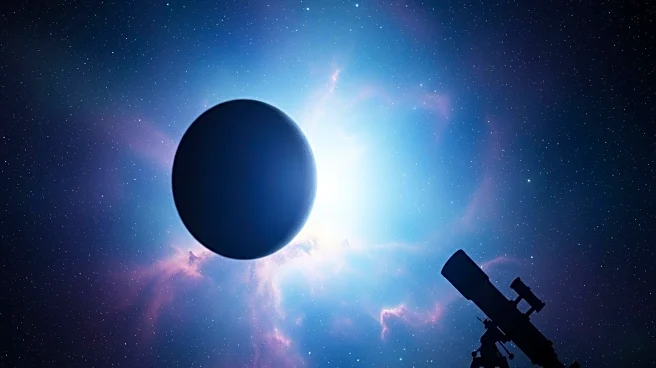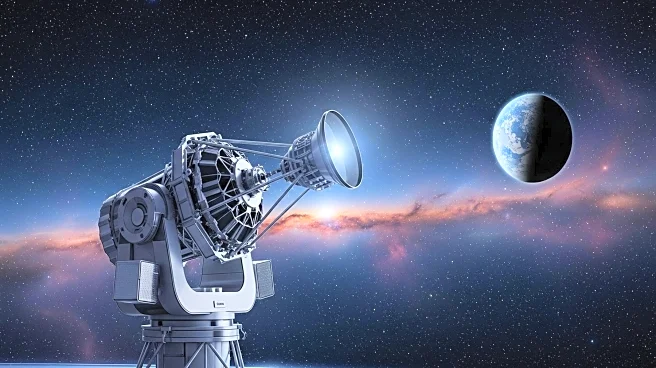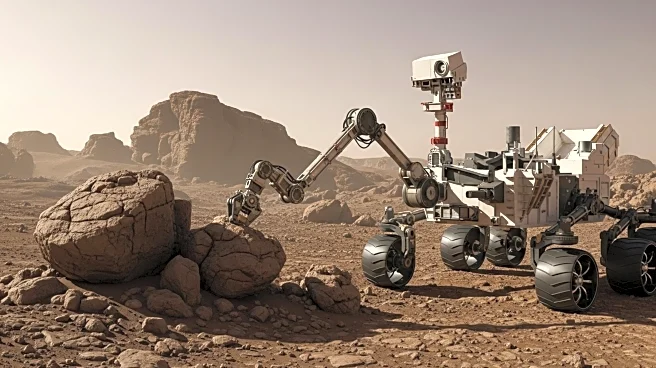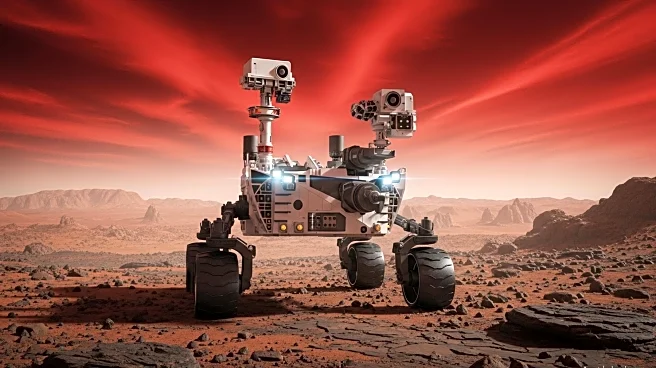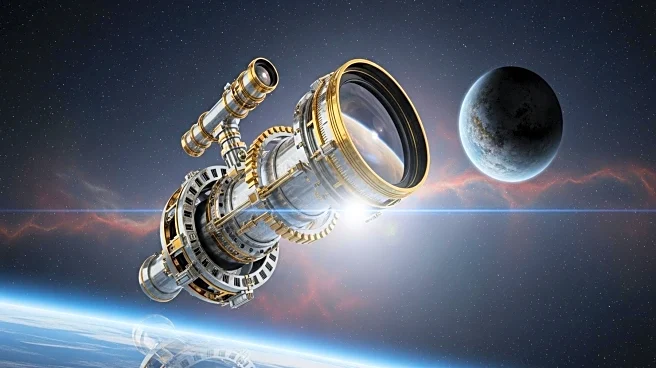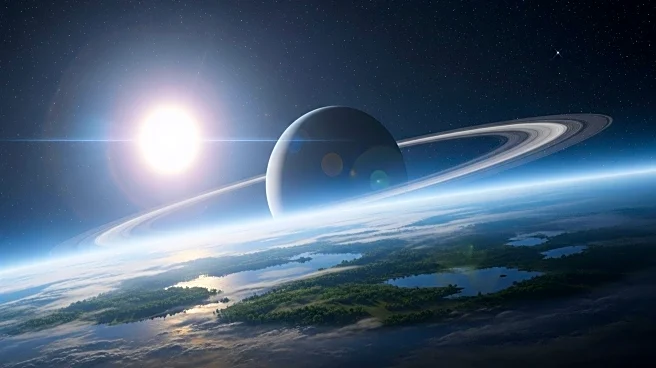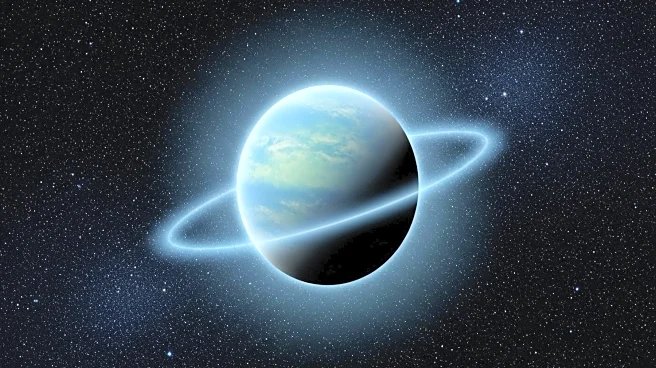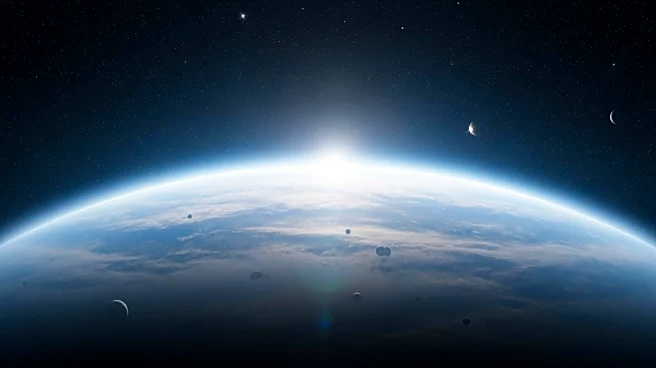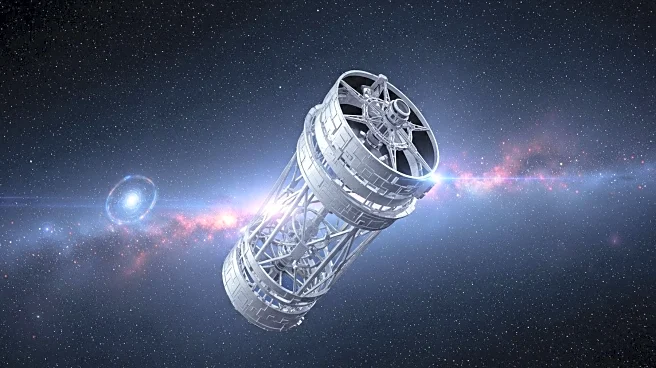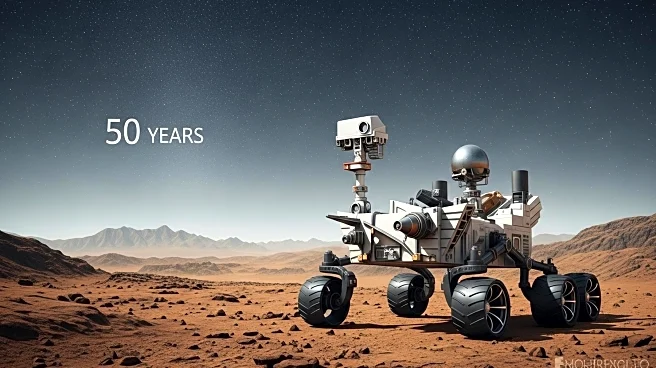What's Happening?
Astronomers have identified a potential atmosphere on TRAPPIST-1e, a rocky planet 40 light-years away, using NASA's James Webb Space Telescope. The research, published in the Astrophysical Journal Letters, suggests that TRAPPIST-1e may have a nitrogen-rich atmosphere similar to Earth's. This discovery raises the possibility of liquid water on the planet's surface, a key ingredient for life. The TRAPPIST-1 system, consisting of seven rocky planets, has been studied for its potential to support life. The telescope measured how TRAPPIST-1e absorbs light, indicating the presence of certain gases, though further studies are needed to confirm the findings.
Why It's Important?
The discovery of a potential atmosphere on TRAPPIST-1e is a significant step in the search for extraterrestrial life. An atmosphere is crucial for maintaining liquid water, which is essential for life as we know it. The findings could lead to a better understanding of the conditions necessary for life beyond Earth. The research also highlights the capabilities of the James Webb Space Telescope in studying distant exoplanets. If confirmed, the presence of an atmosphere on TRAPPIST-1e could provide insights into the habitability of other planets in the TRAPPIST-1 system.
What's Next?
Astronomers plan to conduct further observations of TRAPPIST-1e during additional transits to confirm the presence of an atmosphere. Studies of other planets in the TRAPPIST-1 system are also forthcoming. The research will continue to focus on identifying atmospheres on rocky exoplanets, which is crucial for understanding their potential to support life. The scientific community will be closely monitoring these developments, as they could have profound implications for the search for life beyond our solar system.
